How to Help Teen Crossdressers: Problems & Solutions
Imagine you walk into your son’s room to find him wearing makeup, a dress, and high heels. I’m sure you’ll be taken aback and feel mixed emotions, including confusion, anger, and sadness. You approach your son, who immediately becomes defensive and insists that this is just a phase and he is not gay.
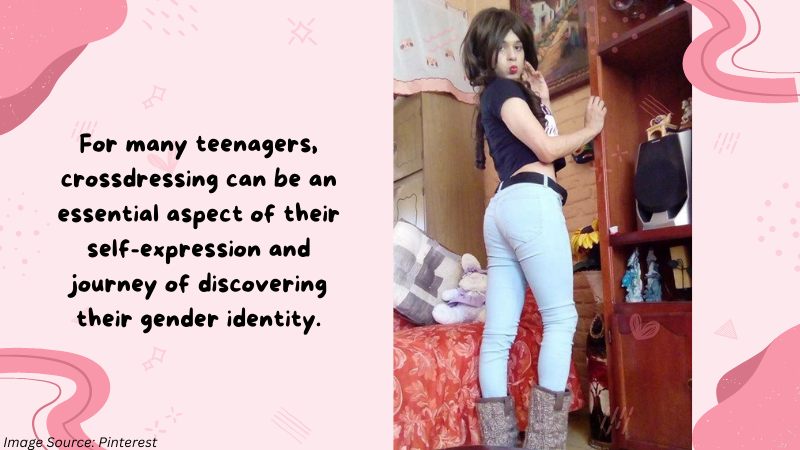
For many parents, discovering that their child crossdressing can be a confusing and emotional experience. Parents struggle to process their feelings and understand what is going on with their children. They love and want to support them deeply, but they also worry about what others will think and how this will impact their future. For many teenagers, crossdressing can be essential to their self-expression and journey of discovering their gender identity. However, this can also be a difficult and isolating experience, especially in a society that often views gender non-conformity as unconventional or unacceptable.

In this blog, we will examine the challenges that teen crossdressers face and provide practical guidance on how we can support and love them as a society. Crossdressing is often associated with being transgender, but it is important to note that not all crossdressers are transgender. Crossdressing can be a form of self-expression for individuals who may or may not identify as transgender. It can also be a part of a person’s gender exploration process.
It is also essential to understand that gender identity is separate from sexual orientation. A person’s gender identity refers to their internal sense of being male, female, or neither. In contrast, sexual orientation refers to who a person is attracted to.
Challenges Faced by Teen Crossdressers
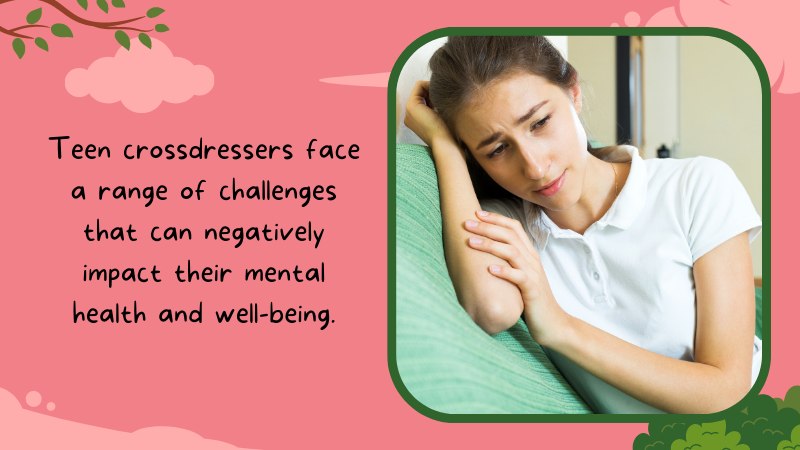
Teen crossdressers face challenges that can negatively impact their mental health and well-being. As a crossdresser, I understand the importance of creating a safe and supportive environment for crossdressers. For many teens, discovering and expressing their gender identity can be challenging. Here are some of the challenges that teen crossdressers may face:
Lack of Acceptance
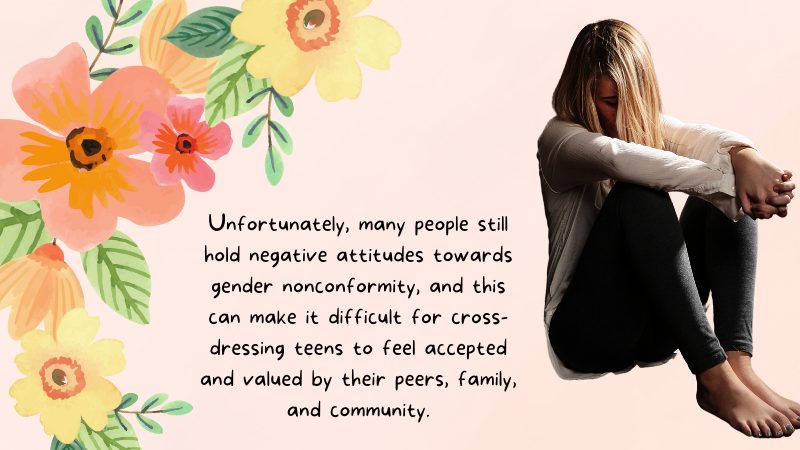
Unfortunately, many people still hold negative attitudes towards gender nonconformity, and this can make it difficult for cross-dressing teens to feel accepted and valued by their peers, family, and community. This can lead to feelings of shame, isolation, and low self-esteem.
Harassment and Bullying

Cross-dressing teens are often targeted for bullying and harassment in person and online. This can range from name-calling and teasing to more serious forms of violence and discrimination. The impact of bullying can be devastating and lead to mental health problems such as depression and anxiety.
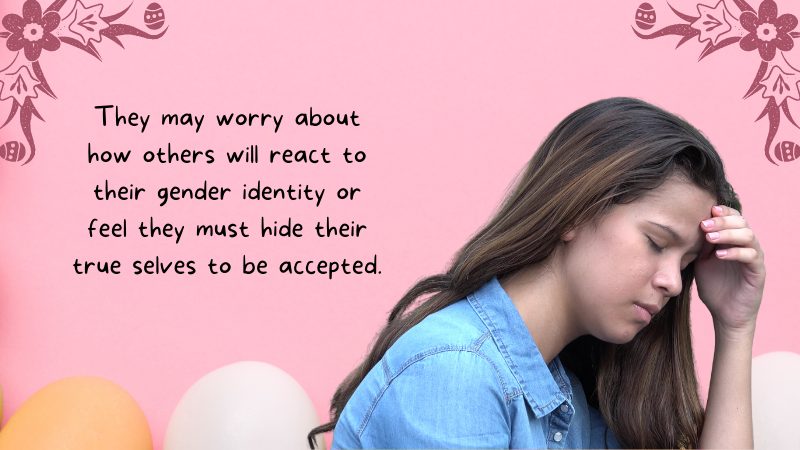
Crossdressing teens may struggle with forming and maintaining romantic and platonic relationships. They may worry about how others will react to their gender identity or feel they must hide their true selves to be accepted.
Lack of Support
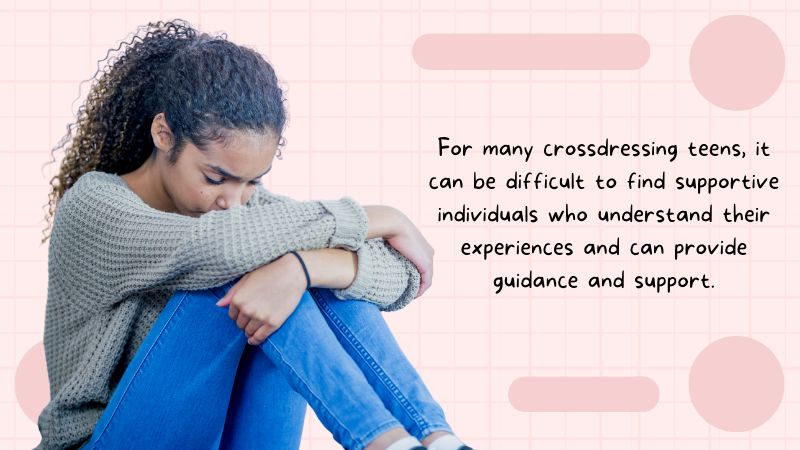
For many crossdressing teens, finding supportive individuals who understand their experiences and can provide guidance and support can be difficult. This can leave them feeling isolated and alone.
Challenges with Family
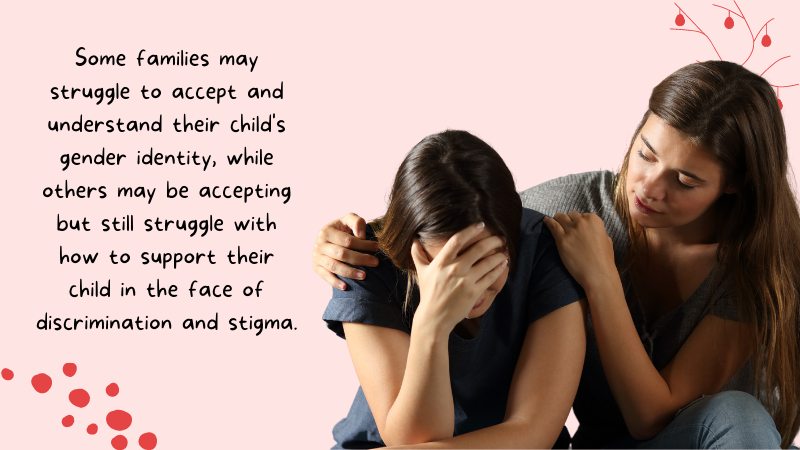
Family can be both a source of support and conflict for crossdressing teens. Some families may struggle to accept and understand their child’s gender identity, while others may be accepting but still struggle with supporting their child in the face of discrimination and stigma.
It is important for all of us to be aware of these challenges and to work towards creating a more inclusive and accepting society for all young individuals, regardless of their gender identity. By showing empathy, understanding, and support, we can help make the world a better place for crossdressing teens.
How to Help Teenage Crossdressers
Be an Advocate:
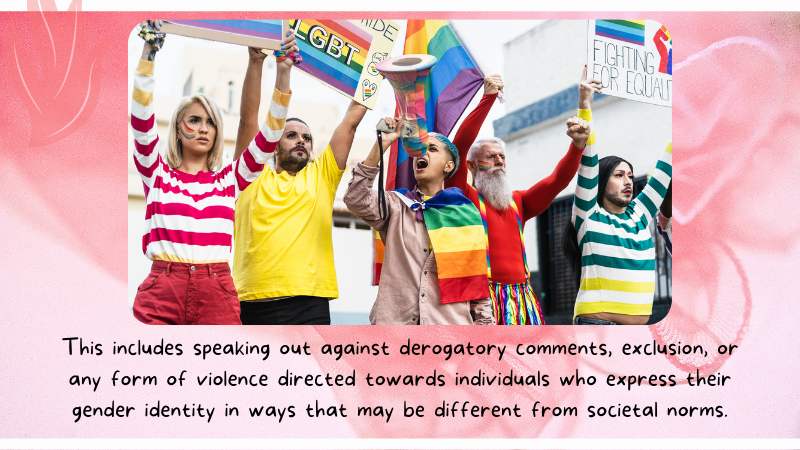
Speak out against discrimination and support policies that protect the rights of crossdressers. This includes speaking out against derogatory comments, exclusion, or any form of violence directed towards individuals who express their gender identity in ways that may be different from societal norms.
If required, advocating for gender-neutral bathroom policies and gender-inclusive language in schools and the workplace is also very important.
Be a Supportive Parent or Guardian:
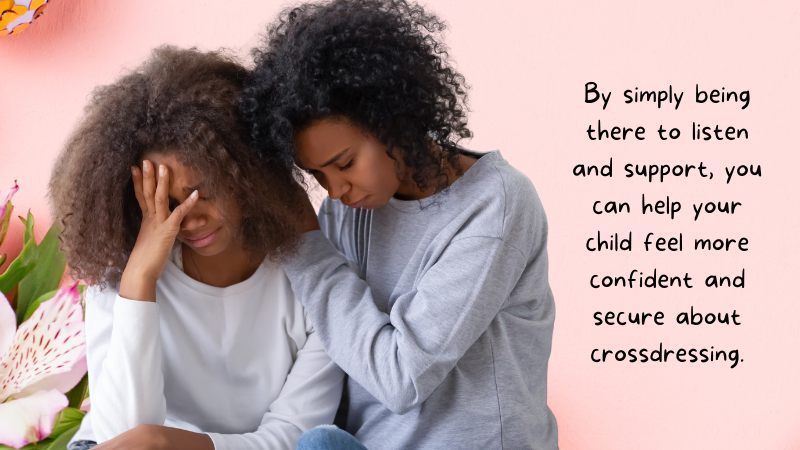
Every child’s journey is unique, and supporting your child as they navigate their path is important. This may include allowing them to express their gender identity in the ways that feel most authentic to them without judgment or criticism, even if that means wearing clothing or accessories typically associated with another gender. By simply being there to listen and support, you can help your child feel more confident and secure about crossdressing. Also, take the time to educate yourself about crossdressing and gender identity. This can include reading books, watching documentaries, or attending workshops. The more you understand, the better equipped you will be to support your child and advocate for their rights. Advocating for your child can help create a more inclusive and supportive environment.
Be a Supportive Friend:
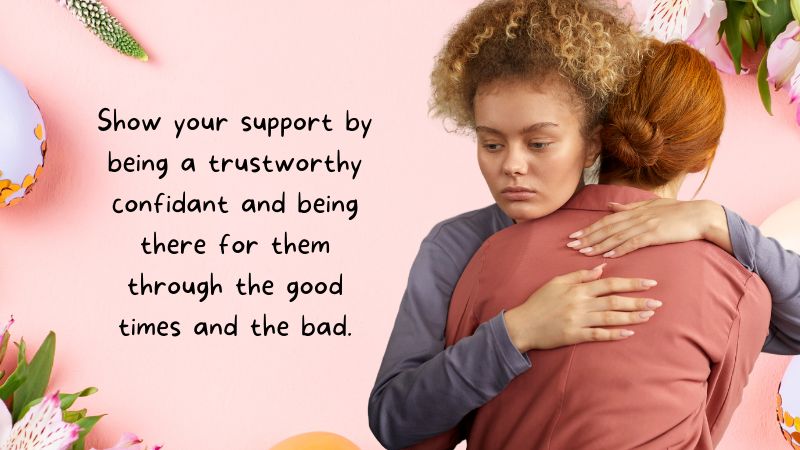
Friends play a crucial role in supporting and accepting teen crossdressers. It is important to understand and respect their gender identity, even if it may differ from yours. Encourage them to be their true selves, and let them know you are there for them. Show your support by being a trustworthy confidant and being there for them through the good times and the bad. If you witness bullying or discrimination, stand up for your friend and speak out against it. Being a supportive friend can help build their confidence, improve their mental health, and positively impact their life.
Be an Understanding Partner:
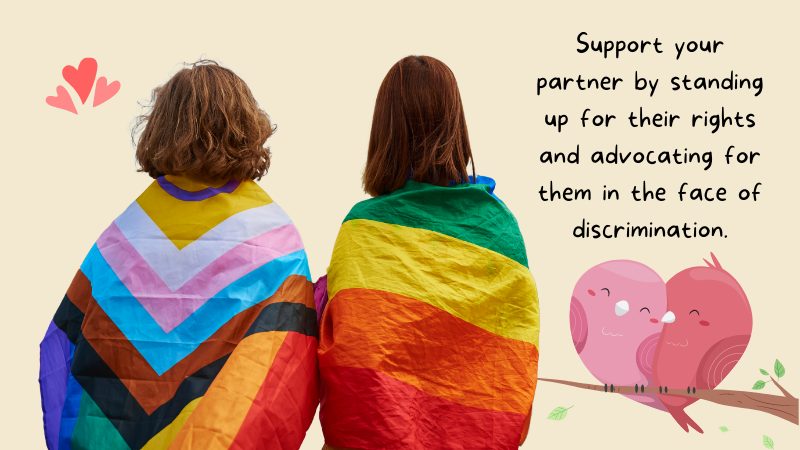
Take the time to listen to your partner and understand their experiences. Ask questions, seek out information, be open and accepting of their gender identity, and allow them to express themselves freely. Suppose you have any fears or concerns about your partner’s crossdressing. In that case, it is important to address these in a non-judgmental way.
Support your partner by standing up for their rights and advocating for them in the face of discrimination. Couples therapy can be a valuable resource for addressing any challenges in the relationship and fostering deeper understanding and connection.
Be an Inclusive Teacher or Co-worker:

As a teacher or co-worker, it’s important to recognize the unique challenges that crossdressing individuals may face and to make an effort to create a supportive and accepting environment for them. This starts with educating yourself about gender identity and the experiences of crossdressing individuals and using gender-neutral language in the classroom or workplace.
It also means being mindful of the impact of your words and actions and speaking out against bullying or discrimination.
Creating a safe and inclusive environment can also involve promoting diversity and inclusion in your school or workplace. This can include showcasing diverse perspectives and experiences in classroom discussions or company initiatives and encouraging open and respectful dialogue about gender identity.
By creating a supportive and inclusive environment, teachers and co-workers can help crossdressers feel valued and accepted and thrive in their education or workplace.
Seek Out Support:
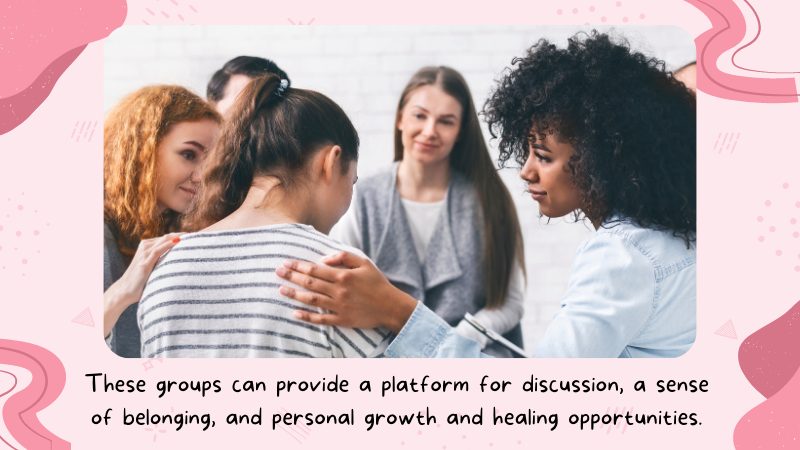
Connecting with others who share similar experiences can be incredibly helpful for feeling less isolated and finding validation and understanding. In-person support groups or online communities can provide a safe and accepting space for crossdresser teens to connect, share their experiences, and support each other.
In-person support groups can be especially beneficial, allowing face-to-face interaction and a sense of community. These groups can provide a platform for discussion, a sense of belonging, and personal growth and healing opportunities. Additionally, participating in support groups can help crossdressing teens to feel seen and heard, increasing confidence and self-esteem. Online communities, such as forums and social media groups, can also provide support and resources.

Online communities can provide a sense of anonymity and safety, which can be particularly important for crossdressing teens who may not feel comfortable sharing their experiences with those close to them. Additionally, online communities can provide access to a wide range of resources, including information on gender identity, medical and mental health resources, and advocacy and activism. Overall, seeking out support from others who share similar experiences can be incredibly beneficial for the well-being and mental health of teen crossdressers. We as a society need to encourage and support crossdressing teens in finding the support they need to thrive.
Summary
Individuals, families, and communities need to support and accept teenage crossdressers. This includes advocating for their rights, being a supportive parent, friend, or co-worker, seeking support and resources, and promoting inclusivity and diversity. By showing love and understanding, we can create a more inclusive and accepting world for all individuals, regardless of gender identity.
Tagged With:Teen CD
- Complete Guide to Become a Cute Sissy Crossdresser
- What Is Femulate? Everything You Didn’t Know About MTF Crossdressing
- Spider Gag: A Beginner’s Guide to Using and Introducing Them in Your Playtime Routine
- What’s Inside A Sissy Men Training Kit?
- How to Train a Sissy Slut with Chastity Cages
- Why a Gay Crossdresser Needs Realistic Breast Forms
Established in 2009, We are a recognized manufacturer and seller of professional crossdressing products.
It is our aim to become not just the most creative manufacturer but also a very considerate seller, as we provide the best quality products for crossdressers all around the world.





















 Breast Forms
Breast Forms  Body Suit
Body Suit  Realistic Mask
Realistic Mask  Femini Girdle
Femini Girdle Hip & Butt Enhancement (8)
Hip & Butt Enhancement (8) Penis Prosthesis
Penis Prosthesis Fake Muscle
Fake Muscle Bikini
Bikini  Wig
Wig  Corsets
Corsets Course
Course service@roanyer.com
service@roanyer.com +8618652200711
+8618652200711 Facebook
Facebook YouTube
YouTube Twitter
Twitter Instagram
Instagram




